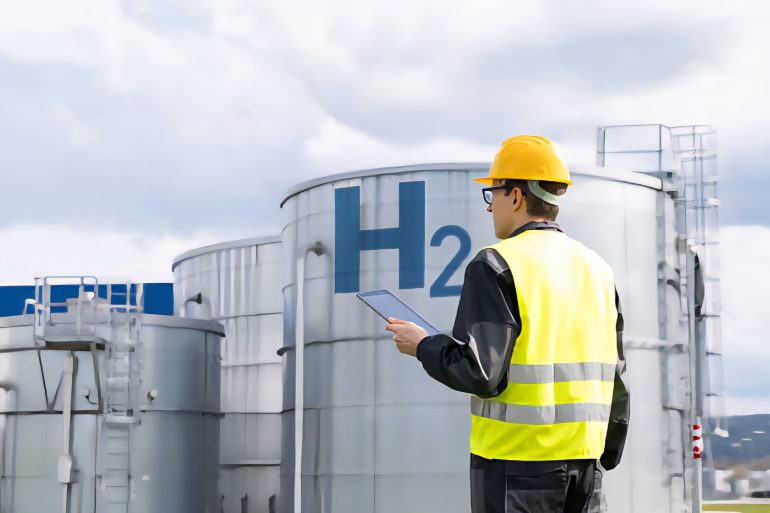Paraguay is making a major move in the global energy scene with the launch of its National Strategy for the Green Hydrogen Economy. This initiative highlights the country’s commitment to sustainability and positions it as a leader in the shift to clean energy, thanks to its 100% renewable electricity from hydroelectric plants like Itaipú, Yacyretá, and Acaray.
Understanding green hydrogen
Green hydrogen is attracting increasing global attention as a vital solution for decarbonising economies and advancing the energy transition. This energy is produced through the electrolysis of water, using electricity from renewable sources. Furthermore, unlike hydrogen derived from fossil fuels, this generates no carbon dioxide during production.
The versatility of green hydrogen allows it to function both as a clean energy carrier and as a raw material in industrial processes, particularly in sectors that are difficult to decarbonise. In addition to its environmental advantages, green hydrogen offers significant economic potential, opening new avenues for investment, industrial development, energy diversification, and high-quality employment.
Countries around the world, including several in Latin America and the Caribbean, are incorporating it into their national energy plans through dedicated roadmaps and policy frameworks. Paraguay, with its abundant renewable resources and fully renewable electricity generation, is uniquely positioned to lead this transformation.
A solid foundation for a clean energy future
Since June 2021, the Paraguayan government has identified green hydrogen as a strategic energy vector for national development. Spearheaded by the Vice Ministry of Mines and Energy, and developed with the vital support of the Inter-American Development Bank (IDB), the resulting strategic document outlines a comprehensive vision for a more competitive, resilient, and innovative energy model.
The strategy is built on six key pillars, supported by 20 action lines and 55 targeted measures. These aim to accelerate the production, utilisation, and regulation of green hydrogen as a central tool for decarbonisation. The strategy also aim with growth of sustainable industries, and the creation of quality employment.

Paraguay’s geographical location and abundance of water resources offer it a distinct competitive edge in producing green hydrogen. Projected costs are particularly promising, ranging from US$1.5 to US$3.1 per kilogram of hydrogen by 2030. Further reductions are anticipated (down to US$1.2–2.2/kg) by 2050.
This cost-effectiveness is largely due to the country’s immediate and low-cost access to hydroelectric energy, enabling the pursuit of ambitious yet achievable targets.
Innovation and strategic global positioning
Despite lacking a coastline, a challenge for direct hydrogen export, Paraguay’s National Strategy tackles this with innovation. The government proposes creating industrial hubs near major energy sources, where green hydrogen is transformed into higher-value products like green fertilisers.
This approach avoids the complexities of transporting hydrogen while promoting industrial diversification and enabling the export of low-carbon goods. The strategy also supports decarbonising key sectors such as heavy-duty and inland transport, laying the foundation for broader national use of green hydrogen and advancing sustainable mobility.
This flexible, pragmatic approach strengthens Paraguay’s competitive position in a global market increasingly focused on clean energy solutions.
Socioeconomic impact and governance
The successful implementation of Paraguay’s green hydrogen strategy is expected to bring significant socioeconomic benefits such as increased foreign investment, GDP (Gross Domestic Product) growth. The green hydroge strategy will also help create quality jobs. It will also encourage the adoption of emerging technologies, fostering local innovation, skills development, and greater national resilience.
By reducing dependence on imported fossil fuels, the strategy enhances Paraguay’s strategic autonomy. To support this transition, the strategy highlights the need for a robust regulatory framework. This includes formally recognising hydrogen production as an industrial activity, setting clear requirements for grid connection, and defining electricity and water tariffs.
The strategy also calls for stronger institutional capacities, particularly within the Vice Ministry of Mines and Energy. Furthermore, the strategy also calls for the creation of an inter-institutional governance body with a monitoring system. The systen aim to track progress and adjust policies as needed.
Green hydrogen: positioning Paraguay
Paraguay’s green hydrogen development includes pilot plants powered by renewable energy to showcase its viability and attract investment. New legislation is underway to regulate the entire hydrogen value chain. The legislation will ensure a transparent and sustainable framework from production to export. A green hydrogen production plant is constructed in the city of Villa Hayes already.
Long-term goals include replacing fossil fuel-based materials in industries like steel, refining, and fertiliser production. These goals aims to aide the transition to a low-carbon economy. The focus on industrial hubs near energy sources addresses logistical challenges and enables broader future applications, including transport.
With abundant, affordable renewable energy, Paraguay is well positioned to become a regional clean energy leader. Its comprehensive strategy lays a strong foundation for green hydrogen to become a key driver of sustainable economic growth.


